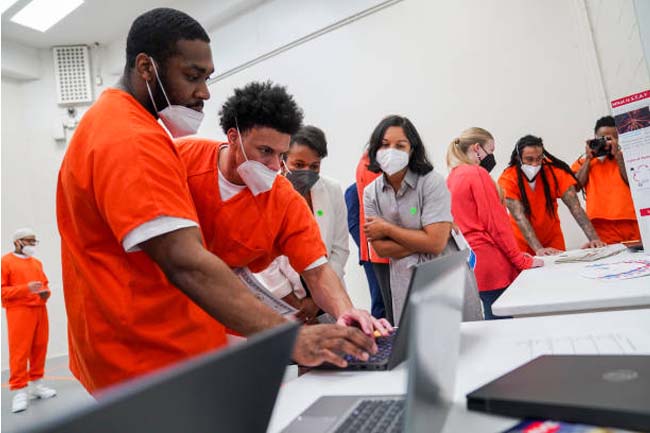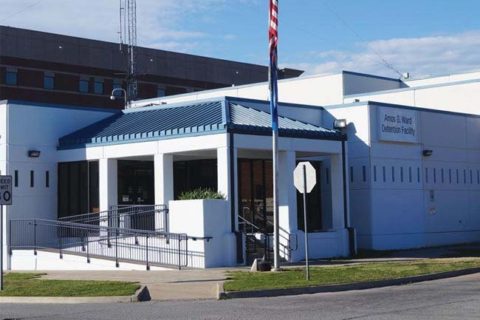Prison culture refers to a few things that develop in correctional facilities, including norms, values, and practices. These are the unique subcultures that appear as a result of the prison environment, the coping mechanisms, and the power dynamics among inmates.
Of course, many factors influence what the culture in a prison will be like and whether the prison will successfully rehabilitate the inmates or even trigger recidivism. Since it is too complex and goes hand-in-hand, it’s very hard to distinguish the effect of prison culture on inmates.

However, it is certain that the effects of prison cultures have two opposing sides: positive and negative—both emerge together. Okay, here’s everything you can know about the impact of prison culture on inmates!
Positive Impact of Prison Culture on inmates
Prison culture has a positive impact on inmates. Even though the prison is often associated with a sensitive environment where fights can occur anytime among inmates, the social system that exists in prison can keep inmates united.
Due to the official authority, the prison’s social system is well organized, regardless of the cons that appear. In some prison environments, the culture will really help inmates compromise with present conditions and tolerate the rigidity of prison rules. In fact, solidarity is still found to be highly significant in some prisons.
The following are some positive effects of prison culture on inmates:
- There is a strong bond and sense of friendship between inmates.
- Healthy connections among inmates may provide emotional support, a sense of belonging, and mutual assistance among inmates.
- Getting self-consolation is a transition from feeling lonely from family, neglect, and guilt towards oneself, which can trigger mental illness.
- With various programs in prison, inmates will gain new skills and knowledge, so that they will feel ready to re-enter society after being released.
- A healthy prison environment and solid companions will really provide opportunities for self-reflection and personal growth for inmates, so they will start to think and introspect themselves against all the frauds committed in the past.
- Inmates will be encouraged to participate in rehabilitation programs that can help them stay away from drug abuse, do anger management, undergo cognitive-behavioral therapy, etc.
- The prison environment that can support inmates will definitely provide guidance, life lessons, and personal growth inspiration.
- Inmates may finally find their passion through art activities that they did not yet find before living in prison.
Okay, these are some positive impacts of prison culture that may affect inmates. However, these may be limited and will be influenced by the overall environment and resources available within.
Negative Impact of Prison Culture on Inmates
When positive impacts appear in prison culture, the negative ones also follow. Basically, the negative impacts occur since not all inmates can really compromise with the cultures emerging in the prison environment. Of course, such things cannot be simply ignored since the negative effects will have a broad effect on inmates.
The following are some negative effects of prison culture on inmates:
- Violence often occurs in prison. There is no doubt that inmates may face physical, sexual, and emotional abuse from other inmates and prison staff.
- Keeping personal safety a priority for inmates can lead to increased aggression and a survival mindset. Some inmates will think it would be better to kill than to be killed behind bars.
- The presence of gangs within prison can lead inmates to seek protection by joining the gang. Then what happens? Fights between gangs become a daily spectacle in prisons, it is common to increase tension, fights, and violence, which can involve many inmates.
- Many inmates violate the prison code of ethics, which can lead to severe consequences, including violence or ostracism from other inmates.
- Social networks that are not formed between prisoners can lead inmates to engage in negative behavior, making it difficult for prisoners to distance themselves from their criminal identity.
- The stigmatization and labeling that exist in the prison environment can hinder inmates’ prospects for employment, housing, and social reintegration upon their return to society.
- Limited access to education and resources and a lack of emphasis on rehabilitation can undermine efforts to provide prisoners with the skills and support they need when they are released back into society.
Okay, those are some negative impacts of prison culture on inmates.
Psychological Impacts of Prison Culture on Inmates
There is no doubt that prison culture can really impact the mental health of inmates. The Bureau of Justice Statistics reported that approximately 1.51 million adults incarcerated in both state and federal prisons in the United States committed violent violations that affected their mental health.
Various dark sides that occur in prison, such as physical, mental, and sexual violence, can trigger mental illnesses such as emotional withdrawal, depression, increased levels of hostility, and suicidal tendencies.
The following are the most common psychological impacts of prison culture on inmates:
- Paranoia
- Delusions
- Depression
- Denial
- Panic and stress
- Claustrophobia
- Nightmares, night terrors, and insomnia
- Increased levels of hostility
- Substance abuse
- Dissociation and emotional withdrawal
- Social withdrawal
- Self-destructive behavior
- Post-traumatic stress disorder (PTSD)
- Diminished self-esteem
It’s important to note that separation from their family and the outside world becomes the worst contribution to the psychology of prisoners. Missing their loved ones can lead to debilitating loneliness, thereby increasing the risk of heart disease, stroke, immune system disorders, and even death, which are closely related to depression.
What Are Factors That Influence the Impact of Prison Culture on Inmates?
When it comes to the impacts of prison culture on inmates, the effect will depend on the inmates’ personalities and how much of a relationship they maintain with people outside the prison. In addition, there are some factors that influence the prison environment and how inmates behave.
Here are some factors that may influence the impact of prison culture on inmates:
- The living conditions in prison are below standard.
- Undertrained and limited staff.
- Scarcity of resources and services.
- Counterproductive segregation practices.
- Overcrowding of prisoners.
- Pessimistic attitudes towards inmates’ ability to make significant gains in their lives.
- The relationship between inmates and prison staff or guards.
- The relationship among inmates. When inmates first enter the prison, they’ll be considered outsiders by others. So, separation from their society and deprivation of essential rights can cause a sense of change in new inmates. In fact, social deprivation mostly affects female inmates.
How to Create a Healthy and Safe Prison Culture?
Ideally, prison culture shouldn’t emphasize the mistakes that inmates have committed. If a prison has this type of culture, it can be certain to be unsuccessful in rehabilitating inmates: it can instead trigger the national recidivism rate significantly.
However, prison culture and environment are crucial for inmates’ health and safety. Basically, changing the environment will automatically change the inmates. In this case, prisons should believe that inmates are also humans who can make changes to be better people and are worthy of help.
Here are some changes that prisons can make to create a healthy and safe prison culture:
- Prisons should provide great health care for inmates.
- Prisons need to respect the living conditions of inmates and provide proper living conditions for them.
- Prisons should operate within prison population guidelines, which can reflect ethical population management.
- Prisons have the ability to promote sanitation, protect the resources of inmates from scarcity, and reduce tension among inmates.
- Prisons must provide educational and vocational programs to prepare them to re-enter society after being released.
- Prisons should hire and train qualified staff that can work competently on rehabilitating inmates.
Additionally, efforts to make changes and reform the prison system often consider the need to handle and transform some aspects of prison culture to create prison environments that can reduce violence, promote rehabilitation, and support successful reintegration into society.

A bookworm and researcher especially related to law and citizenship education. I spend time every day in front of the internet and the campus library.




